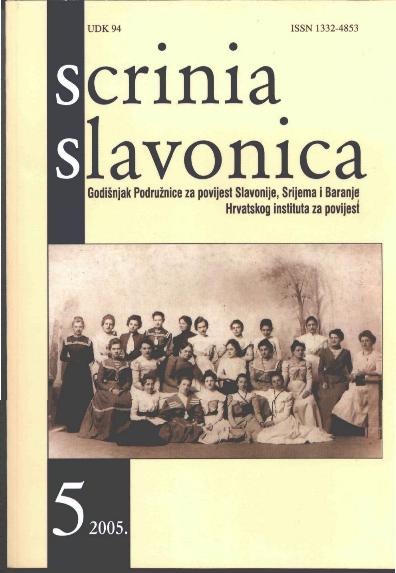Osnovna obilježja urbanog razvitka grada Vukovara između dva svjetska rata
Main features of Vukovar's urban development between the two World Wars
Author(s): Dragan DamjanovićSubject(s): History
Published by: Hrvatski institut za povijest
Keywords: Vukovar; urbanism; regulatory basis; Fran Funtak; Fran Türk; Vladimir Filkuk
Summary/Abstract: In the period between the two World Wars the urban tissue of the town of Vukovar marked a relatively fast and significant growth. Still, as in other places, this growth could only go hand in hand with the economic trends then prevalent in the town and the country at large. What was marked as the period of more aggressive economic development – 1920s and the second half of 1930s, was characterized by an intense activity of contruction industry, which later subsided and virtually perished during the Great Depression (1931 – 1934). Besides a number of new residential buildings, a significant number of industrial plants and similar production facilities emerged at the time in the new industrial zone on the fringes of the western and northern part of Vukovar (Priljevo and other parts of the so-called New Vukovar). Despite the aforementioned no significant advances were made at the time in respect of a planned urban development of Vukovar. The first regulatory document stemming from the 1920s was of a completely unofficial character, while the other one, dating from 1934 was too general to be feasible. The town grew on the basis of partial blueprints which only had relevance for individual streets and zones. In the second half of 1930s, there finally came to the establishment of city engineering, whose experts acted as contractual technical managers. This position was filled by Fran Funtak, the most significant project manager in Vukovar in the period between the two Wars. 1920s saw significant investments in the community infrastructure – which was a prerequisite for the establishment of the system of water supply and for the completion of the paving and electrification of the town. During the 1930s this trend in investments slowed down for shortage of funds – still a new bridge was built in the town center, after the old Baroque one had been destroyed in a flood. Towards the end of 1930s a new market place was errected.
Journal: Scrinia Slavonica
- Issue Year: 2005
- Issue No: 5
- Page Range: 174-198
- Page Count: 25
- Language: Croatian

